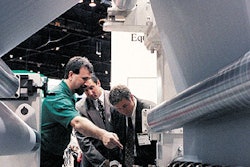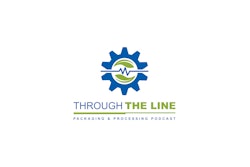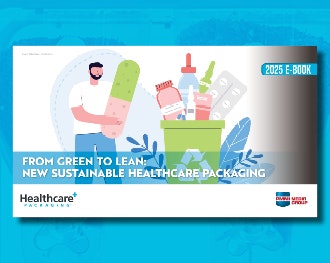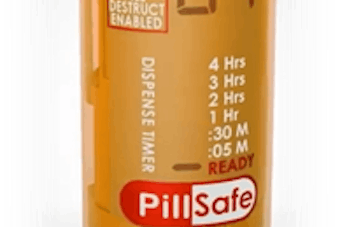"The packaging [challenge] of these products relates to the sensitivities of these proteins, which are also less robust than chemical molecules," he continues. "And these products have to be frozen or lyophylized [freeze-dried] for a shelf life that's useful in a commercial sense." Even then, Smith estimates the shelf life of biologic-based products is typically 12 to 18 months, compared to years for pharmaceutical tablets.
Looking into his crystal ball, the Genzyme professional believes packaging material developments may help extend the shelf life of biologics. "Glass vials have been around for a long time, and I think things like polypropylene and other materials could come into play for biologics." He also envisions advances in blow/fill/seal technology that could be expanded into this field.
Smith says biologics are typically manufactured under aseptic conditions. Developing processes to extend shelf life, he believes, will be an important packaging challenge. And then there's validation. "Process validation of biologics is probably a more stringent process than for drugs or medical devices," he says. He refers not only to the packaging process, but also to "operator qualification—demonstrating that they can work in an aseptic environment. There is some qualification of personnel in all sorts of sterile manufacturing, where you actually qualify the individual to make sure that they are not contaminating the product."
The Center for Biologics Evaluation and Research (CBER) is the center within the Food and Drug Administration that regulates biological products. Its Web site says these products include "vaccines, blood and blood components, somatic cells, gene therapy, tissues, and recombinant therapeutic proteins. In contrast to most drugs that are chemically synthesized and have a known structure, most biologics are complex mixtures that are not easily identified or characterized.
"Biological products, including those manufactured by biotechnology, tend to be heat-sensitive and susceptible to microbial contamination," the Web site continues. "Therefore, it is necessary to use aseptic principles from initial manufacturing steps, which is also in contrast to most conventional drugs."
The CBER Web site adds, "Biological products often represent the cutting edge of biomedical research and, in time, may offer the most effective means to treat a variety of medical illnesses and conditions that presently have no other treatments available."
"With the rapid growth in the biopharmaceutical industry over the past two decades, the number of newly approved biological products has dramatically increased," says the Intl. Society for Pharmaceutical Engineering (www.ispe.org), a global not-for-profit society of pharmaceutical manufacturing professionals representing some 25,000 members in 90 countries. "In 2005, a record 21 biological products received U.S. Food and Drug Administration approvals, including therapies for the treatment of rheumatoid arthritis, diabetes, cancer, and rare genetic disorders."
"It's been reported that three of eight jobs in the next 20 years will be in the healthcare field," says Gerald Finken, president and founder of CSM, a company that provides packaging and labeling services for clinical trials. Finken offers this input concerning the promise of biologics: "I think it's about mankind wanting to find the magic bullet." He adds that one of the challenges in packaging biologics "is that you are dealing with frozen product. If you let it thaw, the potency will drop." He says biologics are expensive to produce "because the process may involve 30 or 40 steps done in sterile or near-sterile conditions. Typically less stable than drugs, biologic-based products may need to be kept refrigerated, lyophilized (freeze-dried), or stored in liquid nitrogen," as shown in the accompanying photo supplied by CSM.
--By Jim Butschli, Editor
Looking into his crystal ball, the Genzyme professional believes packaging material developments may help extend the shelf life of biologics. "Glass vials have been around for a long time, and I think things like polypropylene and other materials could come into play for biologics." He also envisions advances in blow/fill/seal technology that could be expanded into this field.
Smith says biologics are typically manufactured under aseptic conditions. Developing processes to extend shelf life, he believes, will be an important packaging challenge. And then there's validation. "Process validation of biologics is probably a more stringent process than for drugs or medical devices," he says. He refers not only to the packaging process, but also to "operator qualification—demonstrating that they can work in an aseptic environment. There is some qualification of personnel in all sorts of sterile manufacturing, where you actually qualify the individual to make sure that they are not contaminating the product."
The Center for Biologics Evaluation and Research (CBER) is the center within the Food and Drug Administration that regulates biological products. Its Web site says these products include "vaccines, blood and blood components, somatic cells, gene therapy, tissues, and recombinant therapeutic proteins. In contrast to most drugs that are chemically synthesized and have a known structure, most biologics are complex mixtures that are not easily identified or characterized.
"Biological products, including those manufactured by biotechnology, tend to be heat-sensitive and susceptible to microbial contamination," the Web site continues. "Therefore, it is necessary to use aseptic principles from initial manufacturing steps, which is also in contrast to most conventional drugs."
The CBER Web site adds, "Biological products often represent the cutting edge of biomedical research and, in time, may offer the most effective means to treat a variety of medical illnesses and conditions that presently have no other treatments available."
"With the rapid growth in the biopharmaceutical industry over the past two decades, the number of newly approved biological products has dramatically increased," says the Intl. Society for Pharmaceutical Engineering (www.ispe.org), a global not-for-profit society of pharmaceutical manufacturing professionals representing some 25,000 members in 90 countries. "In 2005, a record 21 biological products received U.S. Food and Drug Administration approvals, including therapies for the treatment of rheumatoid arthritis, diabetes, cancer, and rare genetic disorders."
"It's been reported that three of eight jobs in the next 20 years will be in the healthcare field," says Gerald Finken, president and founder of CSM, a company that provides packaging and labeling services for clinical trials. Finken offers this input concerning the promise of biologics: "I think it's about mankind wanting to find the magic bullet." He adds that one of the challenges in packaging biologics "is that you are dealing with frozen product. If you let it thaw, the potency will drop." He says biologics are expensive to produce "because the process may involve 30 or 40 steps done in sterile or near-sterile conditions. Typically less stable than drugs, biologic-based products may need to be kept refrigerated, lyophilized (freeze-dried), or stored in liquid nitrogen," as shown in the accompanying photo supplied by CSM.
--By Jim Butschli, Editor



















